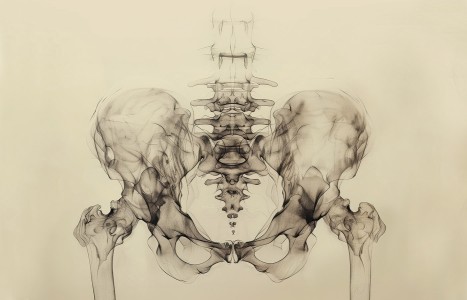People today want convenience, whether it be from their bank, credit card, favorite retail store, or restaurant. They demand it from the companies who hold their loyalty, including their health care providers (you). They don’t want to call and possibly be put on hold, and they want to use an app or schedule an appointment on your website. Here are three reasons your practice can gain by switching to online appointment scheduling.
Facial Rejuvenation With Traditional Chinese Healing Foods
Contrary to what you might have heard, there is beauty in the kitchen. Just as Chinese herbs promote health, beauty, healing and rejuvenation for our face and body, Chinese texts laud the healing and beautifying effects of many foods. Food therapy, as effective as the other traditional Chinese medicine techniques in a facial rejuvenation program, is a powerful tool for smoothing wrinkles and diminishing those dark eye circles, bags and facial discolorations.
Food therapy for facial complexion adheres to the basic tenet of Chinese medical philosophy which holds that external beauty is a mirror reflecting internal health. These foods help address the internal imbalances that result in a spotted or discolored complexion. Of course, their beneficial effect is gradual, and for best results the food therapy program must go hand-in-hand with the other complexion treatments - herbs, acupuncture, acupressure and qigong.
A Flawless Complexion
Here are some of the best foods that the Chinese associate with a spotless and radiant complexion:
Dong Gua (Winter Melon): This gourd vegetable and its seeds are very popular in China, especially as a soup. It benefits the heart, detoxifies the body and beautifies the skin. Whether eaten as a food or taken in herb form, dong gua improves the complexion by removing wind from the skin, especially for complexion problems.
To find and prepare dong gua: You can find it in Asian markets or even in Western-style organic food stores. It's also called wax gourd or white gourd. Eat it as you would any melon, peeling off the outer skin. Remove the seeds and pulp, cut it into small pieces, and put in soup or sauté with garlic. For topical skin beauty use, take a small piece, including the juice, and apply the liquid directly to your face as a skin brightener.
Si Gua (Luffa): This common Chinese vegetable enters and clears the Liver and Stomach channels. It clears heat from the skin and rejuvenates it, and is more specifically used by the Chinese for facial discoloration and wrinkle conditions.
To find and prepare si gua: You easily can grow these zucchini-like vegetables yourself if you have the space. You also should be able to find them at Chinese markets. Prepare them as you would any squash. It also makes an excellent topical mask for dealing with wrinkles, dark spots and uneven facial discoloration. The best way to collect the juice is to cut the vein and let the liquid drip into a jar, and then apply it topically to the face while fresh.
Bai Luo Be (White Turnip): This is a fairly common turnip, often called daikon, which offers plenty of medicinal benefits. In TCM terms, bai luo be is acrid, sweet and cool in nature, entering the Spleen and Lung channels to detoxify the body and free-up stagnating fluids in the channels. It has a beneficial effect on the complexion when eaten regularly.
To find and prepare bai luo be: It can be found in most regular food markets. Clean and cut it into small pieces, and then cook it with your regular soup. You also can shred and prepare it as salad. The other way to use it for facial discoloration is to juice bai luo be every morning and drink about half a cup.
Shi Zi (Persimmon): Shi zi has been known for centuries to clear heat from the body, nourish the lungs and moisten the skin - all actions that improve facial complexion.
To find and prepare shi zi: You may find two different kinds of persimmons. The Chinese version is sometimes called kaki. Both the Chinese and the American persimmons are great for complexion. Eat them raw as fruit, but make sure they're very ripe. Dried persimmons are a special treat that can be found in Chinese markets. Another way to use persimmon to brighten the complexion is by applying the fresh peel to the face.
Sang Shen Zi (Mulberry Fruit): These fruits of the mulberry tree contain beneficial antioxidants. From a TCM point of view, sang shen zi is a blood tonic that benefits the yin and kidneys, helps overcome weakness, and brightens a withered-looking complexion. It is also beneficial for clearing dark spots from the face.
To find and prepare san shen zi: Mulberry fruit is available in food markets and can be eaten as you would any berry. You also can buy fresh mulberry juice and drink it, or use it in your cooking.
Bai Gou (Ginkgo Nut): The health benefits of ginkgo leaf extract have been widely discovered in the West. Much modern research indicates that the antioxidant plant chemicals in ginkgo benefit blood flow and might even slow memory loss. Not many are aware that in Chinese medicine, the nut of the ginkgo tree is more often used medicinally. Ginkgo nut is used herbally, but the whole nuts themselves, often roasted, are a traditional Chinese food that nourishes lung energy and calms wheezing. The best way to use ginkgo to clear the complexion is topical application.
To find and prepare bai gou: It is available in Chinese markets. Crush the fresh nuts into a paste and apply directly to the face.
Yi Yi Ren (Coix Seed): This wonderful barley-like grain, when eaten as food, can help the body clear up discoloration of the facial complexion. Yi yi ren is a very effective strengthener of the digestive system, and clears Heat and Damp obstruction from different levels of the body system, including from the skin layer.
To find and prepare yi yi ren: Cook it in soup, as you would with other beans and barley, or boil it into tea (15 g) and drink it all day.


